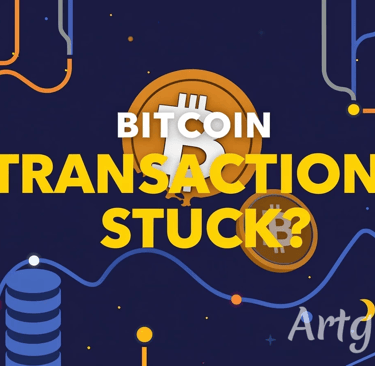Why Is My Bitcoin Transaction Stuck? Five Fixes Plus How Accelerators Work
5/6/20252 min read


Understanding Stuck Bitcoin Transactions
When engaging in Bitcoin transactions, one common frustration users encounter is a stuck transaction. This happens when a transaction does not receive confirmation on the blockchain within a typical timeframe. Common reasons for this issue often include low transaction fees and network congestion.
Common Reasons for Transaction Delay
The primary reason a Bitcoin transaction may get stuck is due to the transaction fee set by the sender. Bitcoin transactions are prioritized based on the fees attached to them. A lower fee may result in miners not picking up your transaction promptly, especially during periods of high network traffic.
Network congestion can also contribute to delays. At times when many users are trying to initiate transactions simultaneously, the number of transactions can exceed the blockchain’s capacity to process them. In these situations, transactions with higher fees typically get processed first, leaving those with lower fees stuck in limbo.
Solutions: Accelerators vs. RBF vs. CPFP
There are several strategies to help expedite a stuck Bitcoin transaction. The most notable include using transaction accelerators, implementing Replace-by-Fee (RBF), and using Child Pays for Parent (CPFP).
1. Transaction Accelerators: These services allow users to pay an additional fee to a mining pool that prioritizes their transaction over others. Though effective, depending on the service, this option can incur additional costs and does not guarantee success if the network is excessively congested.
2. Replace-by-Fee (RBF): This method enables a user to replace a transaction with a new transaction that includes a higher fee. To utilize RBF, you must send the original transaction with the RBF flag set, allowing the new transaction to supersede the previous one.
3. Child Pays for Parent (CPFP): In this approach, you can create a new transaction that spends the outputs of the stuck transaction and includes a higher fee. By incentivizing miners to confirm your new transaction, you indirectly ensure that the original transaction is confirmed.
Ultimately, the choice of solution will depend on the specifics of your situation, including how long your transaction has been pending and the current network conditions. Understanding the intricacies of these methods can help you navigate the challenges of stuck transactions more effectively.
Conclusion
Experiencing a stuck Bitcoin transaction can be frustrating, but various solutions such as transaction accelerators, RBF, and CPFP offer viable options for resolution. Understanding the reasons behind transaction delays and evaluating solutions carefully can empower you to manage your Bitcoin transactions with greater confidence.
Visit: BitAccelerator.org Today
